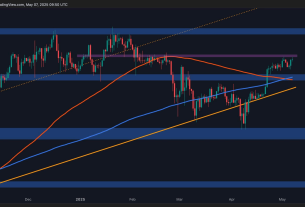In 2009, Bitcoin was essentially worthless in traditional economic terms. When it was first launched in January 2009, there was no established market price for the cryptocurrency. At that time, Bitcoin was a new and experimental form of digital money, created by an unknown person or group using the pseudonym Satoshi Nakamoto.
The Bitcoin network officially came into existence with the mining of the genesis block (Block 0) on January 3, 2009. This event marked the beginning of the Bitcoin blockchain. But there were no formal exchanges or platforms. Bitcoin could be bought or sold using. Traditional fiat currency. As a result, the price of one Bitcoin in 2009 was effectively $0.00.
The Birth of Bitcoin and Its Early Value
Bitcoin was created in 2009 by an unknown person or group using the pseudonym Satoshi Nakamoto. It was introduced as a decentralized digital currency operating on blockchain technology. Initially, Bitcoin had no monetary value. Its first recorded transaction occurred in May 2010, when 10,000 Bitcoins were used to buy two pizzas—demonstrating its potential as a medium of exchange.
Bitcoin emerged in response to the 2008 global financial crisis. In a white paper titled “Bitcoin: A Peer-to-Peer Electronic Cash System,” Nakamoto outlined a vision for a decentralized currency independent of banks or governments.
When the software launched in January 2009, only a small group of enthusiasts knew about it. Bitcoins could only be obtained through “mining,” where users contributed computing power to validate transactions and were rewarded with new coins. With no exchanges or markets in place, early Bitcoins had no economic value and were mostly shared informally as proof of concept.
The First Documented Bitcoin Transaction
The first recorded transaction involving Bitcoin for goods took place in May 2010, more than a year after the cryptocurrency’s launch. A programmer named Laszlo Hanyecz offered 10,000 BTC on a Bitcoin forum in exchange for two pizzas. Another forum member accepted his offer, and Hanyecz received two pizzas from Papa John’s, which valued Bitcoin at approximately $0.0025 per coin.
This transaction is famously known as “Bitcoin Pizza Day” and is celebrated within. The cryptocurrency community. It highlights the fact that Bitcoin had no clear value in 2009. Only when the concept began to gain some recognition in real-world transactions did it start to establish a market value.
The First Documented Bitcoin Transaction
In 2009, Bitcoin was relatively easy to mine compared to today. The mining difficulty was very low due to the small number of users and minimal competition for block rewards. During this early period, even an average home computer could mine hundreds or even thousands of bitcoins in a short amount of time. The reward for mining. A block was identified as 50 BTC. With new blocks mined every 10 minutes.
This meant that anyone who engaged in mining in 2009 could have easily accumulated tens of thousands of bitcoins with minimal technical effort, as long as they had some interest and basic computing knowledge.
Estimating the Value of 1 Bitcoin in 2009
Since there were no formal exchanges, economists and analysts have tried to estimate the hypothetical value of Bitcoin. 2009, using various indirect metrics. These include the cost of electricity used to mine a bitcoin or speculative calculations based on how early users valued it in informal trades.
Using electricity costs, for instance, someone might estimate the price of Bitcoin in 2009 to be fractions of a cent. If it costs a few cents’ worth of electricity to mine one bitcoin. Then its implicit value could. It is considered similarly low. But this is a rough, theoretical approach and not a true reflection of market dynamics.
First Bitcoin Exchange Rates (Late 2009 – Early 2010)
The first attempt to value Bitcoin came in October 2009, when NewLibertyStandard set a rate based on electricity and computing costs: 1,309.03 BTC = $1, making 1 BTC worth about $0.000764. In March 2010, the first exchange, BitcoinMarket.com, launched and priced Bitcoin at around $0.003. At the time, Bitcoin was still experimental, with interest limited to cryptography and libertarian communities.
Bitcoin’s Value in 2009: A Retrospective Analysis
In retrospect, 2009 was the most profitable year to acquire Bitcoin, although few people recognized it at the time. Those who mined or obtained Bitcoin in 2009 and held onto it experienced astronomical gains in the years that followed. From virtually zero value in 2009, Bitcoin’s price eventually rose to $1 in early 2011, then to $1,000 in 2013, and peaked at over $60,000 in 2021.
However, it’s important to note. Many early Bitcoin miners lost access to their wallets by discarding old hard drives or forgetting keys, permanently locking away millions of bitcoins.
Conclusion
In summary, this section offers a final overview of the key points discussed.
To begin with, the price of one Bitcoin in 2009 was virtually zero. There was no established market, no exchanges, and no formal valuation at that time. It wasn’t until late 2009 that individuals even started to price. Bitcoin in dollars, and even then, those values were based on abstract calculations rather than actual market demand. The earliest known valuation placed Bitcoin at less than a thousandth of a dollar.
Bitcoin’s journey from an obscure experiment in 2009 to a globally recognized digital asset highlights. The incredible power of technological innovation, community-driven development, and changing perceptions of money. While it had no real monetary value in its initial year, the groundwork laid in 2009 set the stage. The stage for one of the most remarkable financial narratives of the 21st century.



